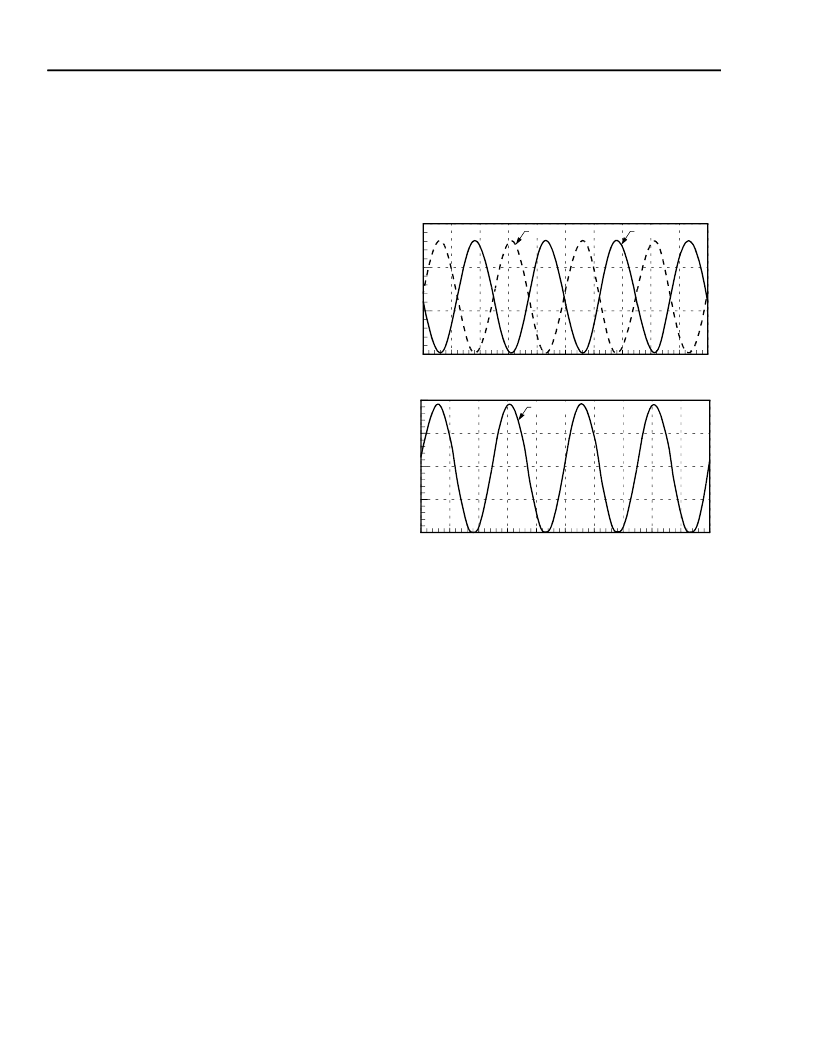- 您現(xiàn)在的位置:買賣IC網(wǎng) > PDF目錄367614 > LUCL9216AGF-D Short-Loop Ringing SLIC with Ground Start PDF資料下載
參數(shù)資料
| 型號: | LUCL9216AGF-D |
| 英文描述: | Short-Loop Ringing SLIC with Ground Start |
| 中文描述: | 短環(huán)振鈴用戶接口與地面開始 |
| 文件頁數(shù): | 26/48頁 |
| 文件大?。?/td> | 1062K |
| 代理商: | LUCL9216AGF-D |
第1頁第2頁第3頁第4頁第5頁第6頁第7頁第8頁第9頁第10頁第11頁第12頁第13頁第14頁第15頁第16頁第17頁第18頁第19頁第20頁第21頁第22頁第23頁第24頁第25頁當前第26頁第27頁第28頁第29頁第30頁第31頁第32頁第33頁第34頁第35頁第36頁第37頁第38頁第39頁第40頁第41頁第42頁第43頁第44頁第45頁第46頁第47頁第48頁

Preliminary Data Sheet
September 2001
Short-Loop Ringing SLIC with Ground Start
L9216A/G
26
Agere Systems Inc.
Supervision
(continued)
Power Ring
(continued)
Sine Wave Input Signal and Sine Wave Power Ring
Signal Output
The low-voltage sine wave input is applied to the L9216
at pin RING
IN
. This signal should be ac-coupled
through 0.47
μ
F. During the ring mode, the signal at
RING
IN
is amplified and presented to the subscriber
loop. The differential gain from RING
IN
to tip and ring is
a nominal 55.
When the device enters the ring mode, the tip/ring
overhead set at OVH and the scan clamp circuit is dis-
abled, allowing the voltage magnitude of the power ring
signal to be maximized. Additionally, in the ring mode,
the loop current limit is increased 2.5X the value set by
the V
PROG
voltage.
The magnitude of the power ring voltage will be a func-
tion of the gain of the ring amplifier, the high voltage
battery, and the input signal at RING
IN
. The input range
of the signal at RING
IN
is 0 V to Vcc. As the input volt-
age at RING
IN
is increased, the magnitude of the power
ring voltage at tip and ring will increase linearly, per the
differential gain of 55, until the tip and ring drive amplifi-
ers begin to saturate. Once the tip and ring amplifiers
reach saturation, further increases of the input signal
will cause clipping distortion of the power ring signal
at tip and ring. The ring signal will appear balanced on
tip and ring. That is, the power ring signal is applied
to both tip and ring, with the signal on tip 180
°
(180 degrees) out of phase from the signal on ring.
Figure 11 shows typical operation of the ring mode,
prior to saturation of the tip and ring drive amplifiers. A
–70 V battery is used with a 100
loop and a 1 REN
load. The input signal is 1 V through a 0.47
μ
F capaci-
tor at RING
IN
, (the input circuit is shown in Figure 12).
This produces a voltage swing from –34 V to –60 V
on ring and from –8 V to –34 V on tip, as shown in
Figure 11. Thus, the total voltage swing is 52 V (60 V to
8 V) for a 1 V input, which is approximately the differen-
tial gain of the device. Note that the tip and ring power
ring signals will swing around V
BATTERY
divided by two.
In this case, there is a –70 V battery so tip and ring
swing around –34 V.
12-3573F
12-3574F
Figure 11. Ring Mode Typical Operation
0
–60
0.60
0.62
0.64
0.66
0.68
0.70
0.72
0.74
0.76
0.78
TIME
0.80
–20
–40
VRING
VTIP
1.0
–1.0
0.60
0.62
0.64
0.66
0.68
0.70
0.72
0.74
0.76
0.78
TIME
0.80
0.5
0.0
–0.5
VRINGIN
相關(guān)PDF資料 |
PDF描述 |
|---|---|
| LUCL9216AGF-DT | Short-Loop Ringing SLIC with Ground Start |
| LUCL9216GRG-D | CONNECTOR ACCESSORY |
| LUCL9217AAR-D | GT 3C 3#16S PIN PLUG |
| LUCL9217AAR-DT | Low-Cost Line Interface with Reverse Battery and PPM |
| LUCL9217GAR-D | Aluminum Snap-In Capacitor; Capacitance: 10000uF; Voltage: 25V; Case Size: 25x30 mm; Packaging: Bulk |
相關(guān)代理商/技術(shù)參數(shù) |
參數(shù)描述 |
|---|---|
| LUCL9216AGF-DT | 制造商:AGERE 制造商全稱:AGERE 功能描述:Short-Loop Ringing SLIC with Ground Start |
| LUCL9216ARG-D | 制造商:AGERE 制造商全稱:AGERE 功能描述:Short-Loop Ringing SLIC with Ground Start |
| LUCL9216GGF-D | 制造商:AGERE 制造商全稱:AGERE 功能描述:Short-Loop Ringing SLIC with Ground Start |
| LUCL9216GGF-DT | 制造商:AGERE 制造商全稱:AGERE 功能描述:Short-Loop Ringing SLIC with Ground Start |
| LUCL9216GRG-D | 制造商:AGERE 制造商全稱:AGERE 功能描述:Short-Loop Ringing SLIC with Ground Start |
發(fā)布緊急采購,3分鐘左右您將得到回復。